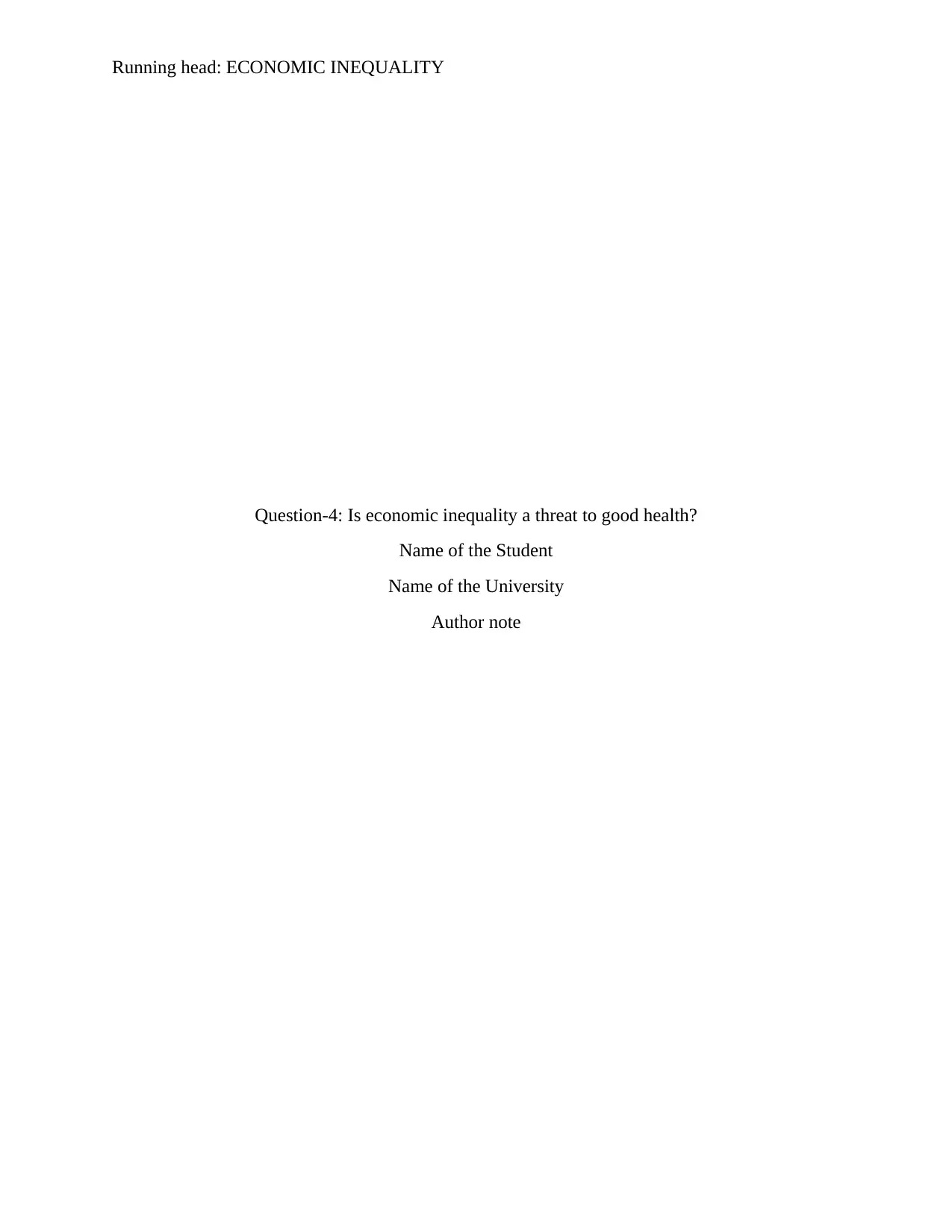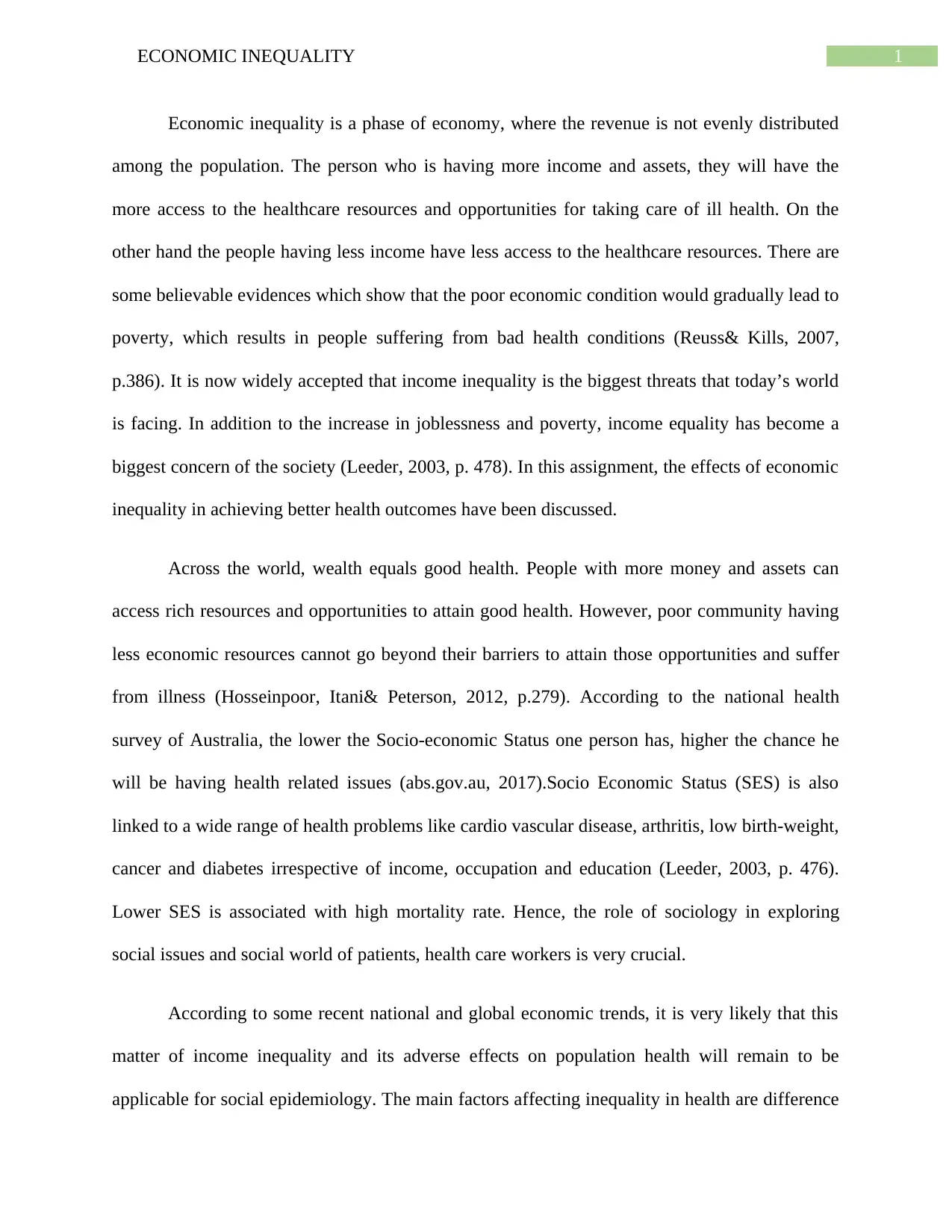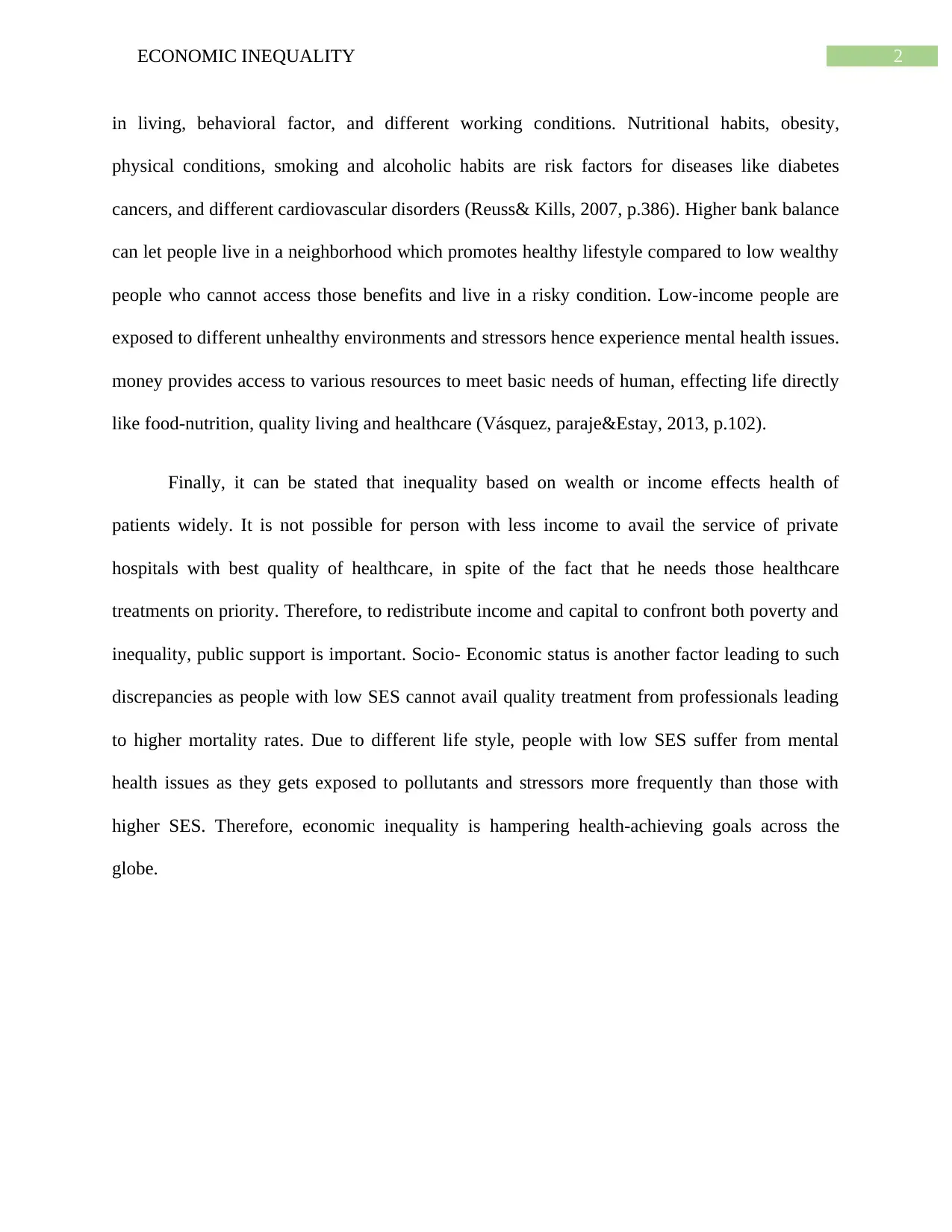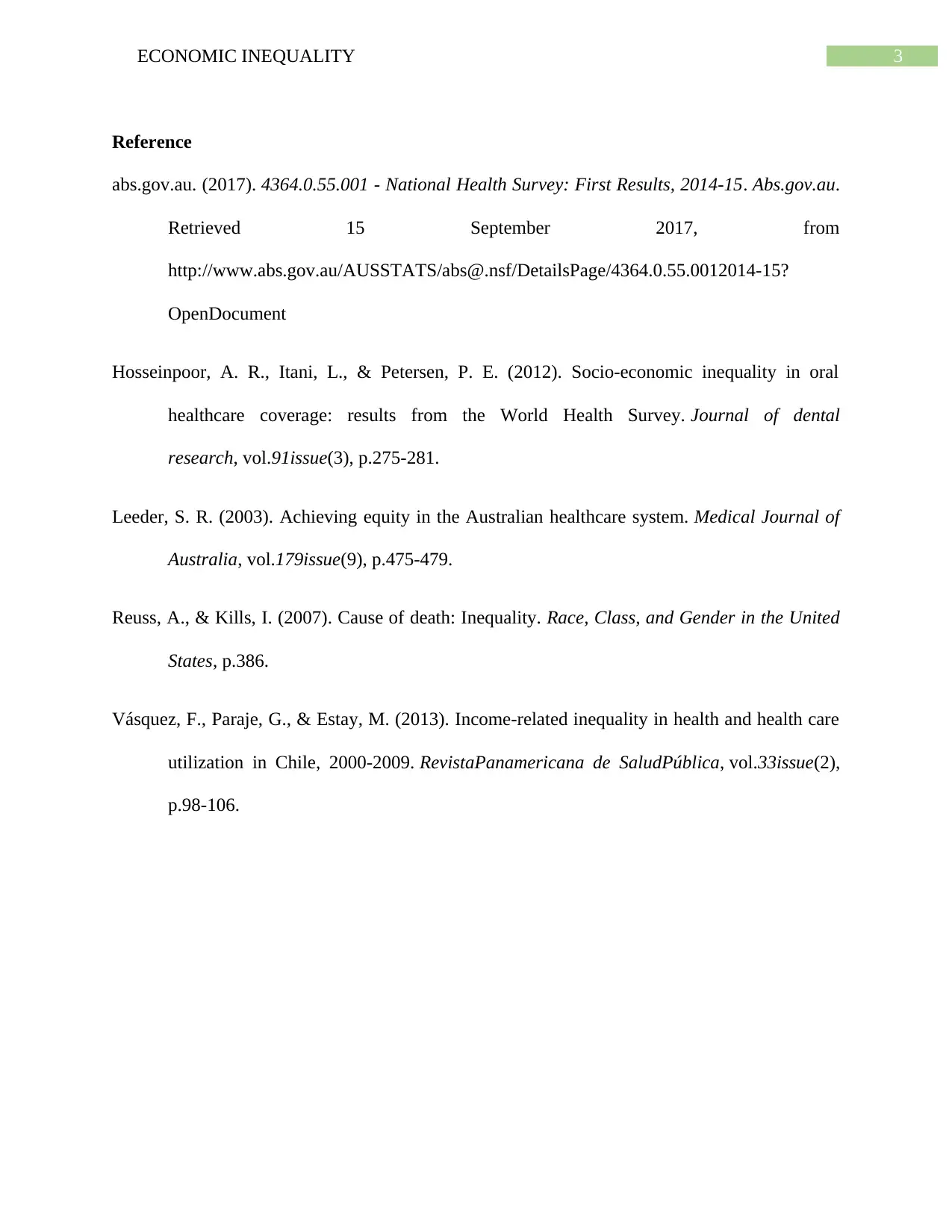Analyzing Economic Inequality and its Effects on Public Health
VerifiedAdded on 2020/03/13
|4
|864
|71
Essay
AI Summary
This assignment examines the significant impact of economic inequality on health outcomes, emphasizing how disparities in income and socioeconomic status affect access to healthcare and overall well-being. It highlights that individuals with higher incomes and assets have better access to healthcare resources, while those with lower incomes face barriers, leading to poorer health. The essay references studies and surveys, including data from Australia's National Health Survey, to demonstrate the link between socioeconomic status and health problems like cardiovascular disease, diabetes, and higher mortality rates. It discusses factors such as living conditions, behavioral factors, and nutritional habits, as well as the role of mental health issues caused by environmental stressors, to illustrate how economic inequality contributes to health disparities. The assignment concludes by emphasizing the need for public support to redistribute income and address both poverty and inequality to achieve better health outcomes globally.
1 out of 4











![[object Object]](/_next/static/media/star-bottom.7253800d.svg)